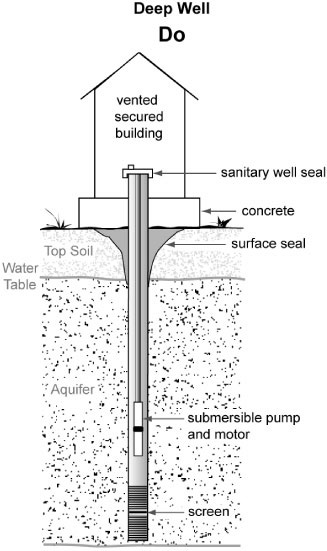Customer meters are the cash register for a utility. If not all meters are accurate then some customers are subsidizing the consumption of other customers because our rates by necessity need to recover all costs incurred by the system.—Anastasia Valdes, Senior Resource Analyst, San Antonio Water System.
The Natural Resources Defense Council (NRDC), in a groundbreaking partnership with utilities from across the nation, submitted a proposal to the American Water Works Association (AWWA) to revise national accuracy standards for new water meters to combat the unnecessary waste of water from low-level leaks, according to a March 2013 press release.
The AWWA is the national non-profit organization that publishes standards for mechanical water meters used to measure customer water usage.
NRDC blames much water waste on antiquated water meters. According to the press release:
Current AWWA standards need to be improved to keep up with today’s water meter technology. The minimum flow rates at which meters are required to be tested have not changed since the first AWWA standard for cold water meters was proposed in 1921. Today, a water meter commonly installed in a new single family home is only certified to be accurate for flows down to 1/4 gallon of water per minute. A continuous flow of 1/4 gallon per minute is equivalent to 360 gallons per day. Lower flows, such as those from a dripping faucet, a running toilet, or a leaky irrigation system, may run for days, weeks or months at levels below 1/4 gallon per minute, and not be fully recorded – or recorded at all – by water meters. Consumers can lose 100 gallons a day or more from unrecorded or under-recorded leakage. This type of water waste contributes to higher bills for all consumers as utilities recover the cost of these water losses through higher and more frequent rate increases.
“Water leaks are incredibly common, often lurking unseen in our homes and businesses and wasting an enormous
amount of water,” said Tracy Quinn, NRDC water policy analyst. “The costs for leaks not captured by meters are passed on to all customers and result in higher rates and more frequent rate increases. We can fix this by ensuring that utilities are supplied with more accurate water meters that can better detect hidden leaks. Stronger accuracy standards will lead to the widespread installation of more accurate meters, and major water savings will follow when homeowners fix leaks identified. At a time when we cannot afford to let a drop go to waste, these water saving measures matter more than ever.”More than one trillion gallons of water leak from U.S. homes each year and 10 percent of homes have leaks that waste 90 gallons or more per day, often unbeknownst to homeowners, according to the US EPA’s WaterSense Program.
Read the entire press release here.





![water-meter-reader[1]](http://purewatergazette.net/blog/wp-content/uploads/2013/04/water-meter-reader1.jpg)


![pwanniemedium[1]](http://purewatergazette.net/blog/wp-content/uploads/2012/05/pwanniemedium1.jpg)
![tanks_joined[1]](http://purewatergazette.net/blog/wp-content/uploads/2013/04/tanks_joined1.jpg)
![wastewater-injection-well[1]](http://purewatergazette.net/blog/wp-content/uploads/2013/04/wastewater-injection-well1.jpg)


